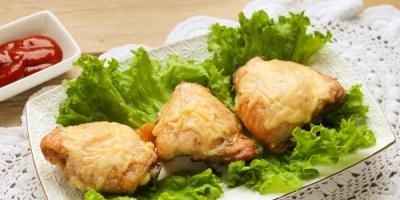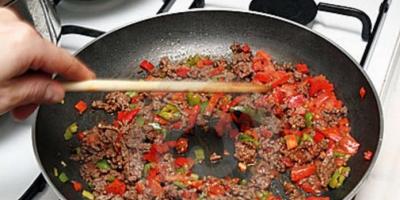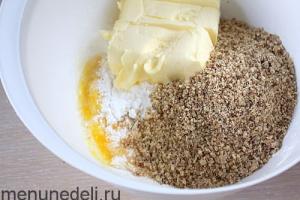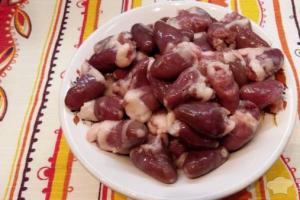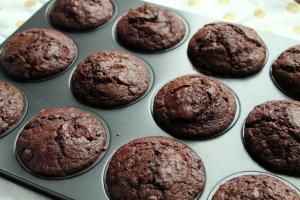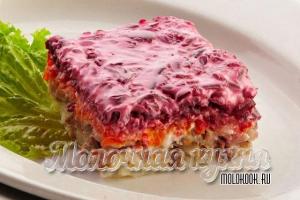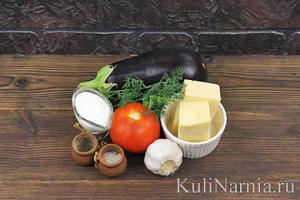Basil does not change its qualities when dried, unlike many other spices. When dried, it does not lose its unique taste, the aroma also does not change and even slightly intensifies.
Dried basil fully retains its beneficial properties and is not inferior to fresh in terms of vitamins and microelements. The only vitamin whose content is reduced is vitamin C.
Calorie content of dried basil is 230 kcal. per 100 grams, of which:
- proteins 22.98 g;
- fats 4.07 g;
- carbohydrates 47.75 g.
- potassium – 2630 mg;
- calcium – 2240 mg;
- magnesium – 711 mg;
- sodium – 76 mg;
- phosphorus – 274 mg.
- iron – 89.8 mg;
- manganese – 9.8 mg;
- copper – 2100 mcg;
- selenium – 3 mcg;
- zinc 7.1 mg.
Photo


Benefits and harms
Useful properties:
- Basil, due to the content of various antioxidants, can have a beneficial effect on the human cardiovascular system, allowing you to maintain youth and health.
- It has antibacterial and antiseptic effects, heals wounds, relieves fever and strengthens the nervous system.
- Modern medicine uses it as a means to combat stress, and the components of this plant are also included in medications to improve memory.
- An extract of basil essential oils can heal wounds and kill germs, which is why it is often used in the preparation of gargles for sore throats and as an expectorant for bronchial asthma.
Contraindications to the use of basil:
- Basil greens contain mercury compounds, for this reason it is harmful to those suffering from diabetes, patients with increased blood clotting, as well as those suffering from hypertension, angina pectoris, and epilepsy.
- It should be consumed with caution and in moderation by pregnant and lactating women.
Important: Like any plant rich in essential oils, basil can be a rather strong allergen!
How to dry at home?
 Lucky people living in regions with warm climates can grow several harvests of basil per year and constantly have a fragrant spice on their table. If the climate does not allow such luxury, and a considerable basil crop has been grown, the task of drying your favorite herb for the winter becomes urgent.
Lucky people living in regions with warm climates can grow several harvests of basil per year and constantly have a fragrant spice on their table. If the climate does not allow such luxury, and a considerable basil crop has been grown, the task of drying your favorite herb for the winter becomes urgent.
How can this be done? Whatever method you choose, the first and most important thing is to harvest on time.
The variety of basil can be any: green, purple, All of them are good in dried form, provided that they are collected before flowering.
The ideal time for collection is in the morning, as soon as the dew has dried on the greenery. Do not harvest under the scorching rays of the sun or in the rain. If possible, dry basil naturally. Read more about how to dry a plant at home.
How to dry basil for the winter at home, see the video below:
Natural drying
You can place the washed leaves on a clean cloth or baking sheet, cover with gauze to prevent dust and place in a warm, dark, dry and always ventilated place for about a week.
The second option is hanging drying. Young basil shoots should be tied into bunches of 4-6 stems, then hung on a rope in the attic or under a shed. The main condition is the absence of direct sunlight and good air exchange in the room.
Drying will take approximately two weeks, readiness can be determined by the fragility of the stems: if it breaks, it means it’s dry, if it bends, we continue to dry.
Using electrical appliances
If it is not possible to use a natural drying method, You can use an oven or electric dryer.
- Before drying in the oven, the leaves should be washed and dried on a paper towel.
- After a couple of hours, when the leaves have dried, you need to lay them out on a parchment-lined baking sheet and place them in an oven preheated to 80-100 degrees.
- Leave the oven door ajar. Drying time is one and a half to two hours.
The good thing about an electric dryer is that it maintains the desired temperature and at the same time provides ventilation for the raw materials.
The washed and dried leaves are laid out on drying trays and the temperature is set to 35-40 degrees. Drying takes approximately 4 hours and does not require owner control.
For more information about drying basil in an electric dryer, see the video below:
How to use and where to add?
 Dried basil finds its most extensive use, of course, in cooking. It can be used as an independent seasoning, for example, in combination with mozzarella cheese and tomatoes, or as part of multicomponent mixtures, such as “Italian Herbs” or “Herbs of Provence”.
Dried basil finds its most extensive use, of course, in cooking. It can be used as an independent seasoning, for example, in combination with mozzarella cheese and tomatoes, or as part of multicomponent mixtures, such as “Italian Herbs” or “Herbs of Provence”.
In these mixtures, basil is combined with dried chopped garlic, rosemary, sage, peppermint and marjoram. These spices are actively used in cooking:
- different types of pasta;
- baking pizza;
- serve as an excellent seasoning for meat dishes, especially lamb, as well as chicken dishes.
In addition to cooking, in everyday life, Basil decoction is used to treat the oral cavity for stomatitis, sore throat, and inhalations. To do this, brew 2 tablespoons of dry basil per 0.5 liter of water in a thermos. The decoction will be ready after 5-6 hours.
To boost immunity, basil is brewed like tea, at the rate of 0.5 teaspoon per glass of boiling water. The drink is drunk throughout the day, adding sugar, honey or raspberry jam to taste.
Storage
After drying, you should pick the leaves from the branches and grind them to a fine powder. Then pour into small, completely dry and clean glass jars and close tightly. It is advisable to label the jar with the name of the spice and the date of preparation. Dried basil should be stored in a dry, dark, cool place.
Attention: It is advisable to use dried basil within two years after harvesting.
Where to buy?
Dried basil is widely available on sale both as an independent spice and as part of mixtures with other spices. Sold in packaging starting from 10 grams, it can be packaged in a moisture-proof paper bag or in a small glass jar.
 You can buy this seasoning everywhere, from a small chain supermarket to a market or online store. The price of the smallest bag will be 15-20 rubles, a kilogram of dried herbs will cost 1000-1200 rubles.
You can buy this seasoning everywhere, from a small chain supermarket to a market or online store. The price of the smallest bag will be 15-20 rubles, a kilogram of dried herbs will cost 1000-1200 rubles.
In St. Petersburg and Moscow, a large selection of this spice from various manufacturers can be found in the Auchan, Lenta, Metro, and Perekrestok hypermarkets.
Also dried basil is a very popular souvenir in the places where it grows, for example in the south of France and Italy. Tourists willingly purchase inexpensive, fragrant sachets as gifts for family and friends. The undoubted advantage of this souvenir is its light weight and versatility.
When purchasing dried basil, you should pay attention to the integrity and appearance of the packaging, shelf life, and place of manufacture. On the market, you can additionally evaluate the aroma of the spice, the uniformity of the composition and the absence of foreign impurities.
Properly prepared dried basil will be an excellent helper in the kitchen, diversify your usual dishes, and increase the immunity and vitality of all family members.
Posting ads is free and no registration is required. But there is pre-moderation of ads.
Basil is a spicy aromatic seasoning, known since ancient times and coming to us from eastern countries. In India, basil was revered as a sacred plant and was called the favorite plant of Vishnu. Hindus believed that basil bestowed divine power, and the inhabitants of Ancient Rome believed in its ability to bring wealth and prosperity to the home. Basil was brought to Europe in the middle of the 4th century and quickly spread throughout the Mediterranean.
There are dozens of types of basil, but the most common of them is common basil, or, as it is also called, sweet basil. This basil is familiar to everyone with its green or dark purple leaves. It is noteworthy that green basil has a rich, bright aroma, while purple basil thins out the subtle smell of cloves. Basil perfectly retains its taste and aromatic properties even in dried form, which is why it is widely used in cooking.
Basil contains B vitamins (such as B1, B2, B6 and B9), vitamin A, vitamin C, as well as vitamins K and PP. Among the microelements in basil are zinc, iron, copper, manganese, selenium, phosphorus and potassium.
Useful properties
Basil improves digestion, tones the body, strengthens the immune system and allows the body to quickly recover from stress. Thanks to its ability to fight free radicals, basil slows down the aging process in the body, which has a good effect on the condition of the skin and the functioning of internal organs.
The B vitamins contained in the composition promote energy production, strengthen hair and nails, and ensure the proper functioning of the nervous and immune systems. In addition, dried basil has a bactericidal and antispasmodic effect, helps with insomnia and colds.
Application
Dried basil is used in the preparation of various dressings, sauces and gravies. It is used to flavor salads, soups and pates. Thanks to his unique aroma Basil perfectly complements fish, meat and egg dishes. Original taste he gives and pasta, so it is often used as a seasoning for pasta or lasagne.
Dried basil is indispensable for salting and pickling tomatoes, cucumbers and peppers. It goes well with mint, coriander or parsley. When combined with thyme, basil can add spiciness to dishes, and when mixed with rosemary, it acquires a rich peppery smell.
It is used as a flavoring in the preparation of drinks. Dried basil leaves are used to make a tea that lowers blood pressure.
Latest forum topics on our website
- Bell / What mask can you use to get rid of blackheads?
- Bonnita / Which is better - chemical peeling or laser?
- Masha / Who did laser hair removal?
Other articles in this section
| Zira Zira – seeds of the herb cumin, which belongs to the parsley family, is sold in the form of oblong-shaped grains. In many countries it is customary to call it by its Latin name; in our country it is called the same as in the East. This seasoning has been known since ancient times, but gained great popularity in oriental cuisine in medicine. The history of the use of cumin goes back many centuries. It is often confused with caraway seeds, which are similar in appearance to cumin grains. Due to its specific taste, it is often used as a seasoning for bread and meat dishes. |
|
| Ginger Ginger is an exotic perennial plant native to tropical and subtropical climates. The countries of Southeast Asia are considered to be its historical homeland. Currently, industrial plantations of cultivated ginger are located in China, India, Indonesia, Australia and some West African countries. A rare type of ginger is grown in Jamaica, which has a unique delicate aroma. |
|
| Baking soda Baking soda (or otherwise known scientifically as sodium bicarbonate), whose chemical formula is NaHCO3, is a non-toxic crystalline substance, and is most often sold as a fine, odorless, salty powder (lye). As a result of chemical reactions, sodium carbonate salt precipitates, water is separated and carbon dioxide is released. The reaction is weak, therefore absolutely safe for humans, animals and plants. |
|
| Vanilla Vanilla is a spice that gives a unique taste to many confectionery products, nothing more than the fruits of one of the varieties of orchids. The plant from which vanilla is obtained grows in the tropical forests of South America. This is a vine with beautiful delicate flowers that bloom just one day a year. The fruits of the plant are collected before they are ripe and dried in a special way until a white coating forms on them, which gives us the familiar vanilla aroma. |
|
| Coriander Coriander is an annual herbaceous plant belonging to the Apiaceae family. Even the ancient Greeks treated it with great respect and considered it a medical remedy. Later, thanks to the Romans, coriander was discovered in England and Western Europe. Then he ended up in America and then in India. |
|
| Cardamom This spicy seasoning has been known since ancient times. Cardamom was credited with healing properties. It was believed that it could relieve migraines, colds, and cure liver and intestinal diseases. Greek winemakers could not imagine drinks without cardamom grains. In the Middle Ages, the fruits began to be used for salting meat and fish. Until now, it is popular all over the world and in terms of sales - it ranks second after black pepper. |
|
| Ground white pepper The pepper vine, which gives us the irreplaceable and beloved black pepper in cooking, also provides another tasty seasoning - white pepper. In fact, these are the same fruits of the same plant. Only to obtain black pepper are they picked green and unripe. And white pepper can only be prepared from fully ripened fruits that have gained the strength of their red color. |
|
| Chicory Chicory (lat. Cichurium) is a perennial herbaceous plant belonging to the family Composite. It is found everywhere in Russia, Belarus and Ukraine, growing in meadows, near roads and wastelands. |
|
| Vanillin For the vast majority of people, vanillin is a crystalline powder with a specific rich vanilla aroma. The demand for vanilla is significantly higher than the availability natural product. Therefore, people had to use chemical reactions to reproduce artificial vanillin to satisfy all the needs. |
|
| Raw sugar Raw sugar is a unique, incompletely processed, easily digestible food product. It tastes sweet, most often of cane origin, less often made from sugar beets, as it has an unpleasant aftertaste and lower content of microelements. Available in light brown, gray and white colors. |
Basil is not only a spice, but also medicinal plant, well known for its healing properties in India.
Beneficial properties of dried basil
- Basil and respiratory diseases– since basil helps ease the process of respiratory tract infections, it can be used as an effective remedy for the treatment of acute and chronic bronchitis.
- Basil and asthma– this spice will also be useful for asthmatics, as this plant helps ease respiratory processes and reduce inflammation. The very components that make up basil help get rid of asthma attacks.
- Basil and lung diseases– basil essential oils contain camphene, vitamin C, eugenol, cineole, which, when combined, relieve inflammatory processes in the lungs. That is why it is recommended to use basil not only for the treatment of diseases such as pneumonia, but also for an integrated approach in the treatment of tuberculosis and lung cancer.
- Basil and cardiovascular diseases. As we have already mentioned, basil contains the substance eugenol, which has the property of protecting our heart and blood vessels from the effects of free harmful radicals, and also helps reduce them in the blood.
- Basil and stress. We all know the property of antioxidants and vitamin C (they, by the way, are part of this spice) to fight free radicals, and thereby reduce the damage they cause to our body. Therefore, such properties of basil as calming nerves and reducing inflammation do not surprise anyone.
- Basil and dentistry. Surprisingly, instead of the newfangled mouth rinses that are sold in pharmacies today, you can use basil tea, which will help you destroy all your oral bacteria. This decoction will also be an excellent prevention of the development of cancerous tumors. Also, with its help you can forget about dental plaque, caries and tartar. As for the use of basil leaves in their natural form, it is not recommended to chew them, since they contain mercury compounds, but a decoction in terms of toxicity will be more harmless, and also useful.
- Basil and kidney stones. Another amazing property of basil is to reduce the amount of uric acid in human blood. Let us remind you that this acid is the main culprit that causes stones to appear in your kidneys. A, components essential oil basil, in turn, helps dissolve these stones. The advantage of this particular product is that these oils also contain analgesics, so that all these unpleasant processes in your body occur absolutely painlessly.
- Basil and skin diseases. If you take baths with a decoction of basil or wash your face with such decoctions, you will forget about many skin diseases. It is noteworthy that another property of basil oil is to drive away - this is very important in the summer. And, if you wipe your wounds with basil decoction, the skin regeneration processes will occur more intensely.
- Basil and eye diseases. Rinsing your eyes with basil decoction will help you get rid of fungal infections affecting the eyes, conjunctivitis and other diseases.
- Basil and radiation. You won’t believe it, but scientists have proven that the leaves of this spice protect against the harmful effects of radiation, and even treat its harmful effects.

Use this spice during periods of viral diseases and you will not only open new taste familiar dishes, but you will also forget about what it means to “be on sick leave.”
Basil and– this spicy plant contains essential oils and phytonutrients, which make basil a powerful natural antibiotic that has antifungal, bactericidal and even disinfectant properties. Therefore, if you consume basil during the period of viral diseases, you will be able to protect your body from all types of infections, and flu of different strains will not be scary for you. Likewise, basil is ready to fight protozoa bacteria, fungi and viruses that cause high body temperature. The effect of basil in this situation is that it helps to destroy pathogens, and the temperature drops on its own.
Both in expensive restaurants and in home cooking, basil is used along with other exquisite spices and herbs. And if in the summer we use it fresh, in the winter it is difficult to afford such a luxury. Therefore, we will dry the grass for future use.
Recipe contents:
Basil is a truly wonderful herb that can be used fresh or dried. Dried herbs are available all year round, which greatly facilitates their use for cooking. Green and purple leaves are used as a spice, as well as the flowers themselves, collected at the beginning of flowering.
The dried plant is very useful. Its beneficial properties are due to the high content of essential oil, thanks to which the seasoning is in demand not only in cooking, but also in medicine. Another undeniable benefit of basil lies in the similar effects of antibiotics. Spicy herb helps relieve inflammation of the skin, eyes and internal organs. In general, as you can see, the grass is actually universal, so be sure to prepare it for the winter.
Dried basil, like fresh basil, makes a significant difference Tastier than sausage and homemade pates. It is added to almost all dishes of Mediterranean cuisine. It is perfect for pickling cucumbers and zucchini, creating real culinary masterpieces. Lovers of healthy and tasty food appreciate it for its uniquely rich taste, and it has a wide variety of shades: spicy, hot, with a hint of black pepper and the aroma of camphor.
- Calorie content per 100 g - 230 kcal.
- Number of servings - optional
- Cooking time - 10 minutes prep work, plus drying time
 Ingredients:
Ingredients:
- Fresh basil leaves - any quantity
How to cook dried basil

1. Disassemble a bunch of plants that you bought in a store or at the market into twigs, remove the leaves from them and put them in a sieve. Bring them to the stream cold water and rinse the greens. If you want, you can dry the twigs, but prepare them separately.

2. Transfer the leaves to a dry towel, cover with a second towel on top and blot the basil so that it absorbs all the liquid.

3. Transfer the plant to a board and chop. You don’t have to crush it very finely, because after drying, the leaves will decrease in size. But if you are preparing spruce branches of the plant, cut them as small as possible so that they do not dry out with sticks.

4. Transfer the chopped basil to a convenient surface, such as a baking sheet, and place in a ventilated place to dry. The basil should not be exposed to sunlight, otherwise the herb will burn out. If you have a special dryer, use it.
Stir the herb while drying so that it dries evenly and the lower leaves do not rot, especially if the basil was not completely dried after washing. Typically, dry land takes no more than 3 days in the hot summer at room temperature.
Dried basil is an aromatic spice that has unique beneficial properties and adds a rich taste to the dish. Initially, this herb was widely used in French, Greek, Italian, Georgian and Azerbaijani cuisine.
The popularity of the seasoning grew rapidly, and soon it became an element of the culinary culture of other peoples. However fresh leaves the plants quickly deteriorated, and cooks began to look for a way to increase the shelf life of the spice. Drying basil made it possible to prevent the loss of beneficial and taste properties, as well as to prepare the seasoning for future use.
Use in cooking
In cooking, dried basil is most often used as a separate seasoning, but sometimes it is part of spice mixtures.
To impart an exquisite aroma to three kilograms of the final product, just a quarter teaspoon of the plant in dried form is enough.
What dishes are basil added to? The seasoning will perfectly complement soups, pizzas, meats, risotto, omelettes, lasagna, cottage cheese casserole And stewed vegetables. The dried ingredient is an essential component of pesto sauce, along with grated Parmesan, garlic, pine nuts and olive oil.
The dried product is combined with tomatoes and sweet paprika. And this is not the entire list of dishes where spice is added. Basil adds flavor to beef and lamb. The spice is also used to prepare salads, winter preparations and even pasta.

Use for medicinal and cosmetic purposes
Dried basil is widely used not only in cooking; its daily use helps cope with various ailments; the use of cosmetics containing this herb can slow down the aging process.
This spice is used in medicine to treat whooping cough, prolonged bronchitis, neuroses, neuralgia, migraines, inflammation of the bladder and kidneys. It accelerates cell regeneration and also slows down the aging process.
Dry basil is used to prepare an infusion that stimulates the appetite and improves digestion. The benefits of the plant for women during lactation are invaluable. It increases milk production and enhances its protective properties.
The spice is used for visual impairment, bone fractures and bronchial asthma. There are positive results from using the herb in complex therapy in the treatment of cancer. How is basil useful in the fight against this serious disease? Of course, it is not a panacea, but it can slow down the formation of carcinogens in cells.
Basil contains fiber, vitamins and microelements. The plant is rich in iron, zinc, potassium, magnesium, manganese, phosphorus, selenium, calcium. The folic acid contained in it helps normalize the production of hormones in women.
Eating dry spices prevents the formation of blood clots, helps cope with headaches, relieves nervous tension, and increases the level of hemoglobin in the blood.
In winter, it helps strengthen the immune system. These beneficial properties of the plant are due to the content of phytoncides and vegetable fats in its composition.

How to dry basil at home
Making dried basil at home is easy. First, the grass should be washed and spread on paper towels. You can then place the dried herb in an electric dryer or oven and dry for five hours at a temperature of thirty-five degrees.
There is an alternative method of preparing the aromatic herb that does not require the use of machinery, but requires more time. Bunches of grass can be hung in a dark, well-ventilated area for several days.
After the leaves have dried, they should be separated from the branches, crushed into powder, placed in a paper bag or jar with a tight-fitting lid and stored in a dry place, protected from light.
Contraindications for use
In order for the plant to bring exceptional benefits, contraindications must be taken into account. Basil is not recommended for use in the presence of diabetes, thrombophlebitis, hemophilia, thrombosis and other diseases of the circulatory system, as well as for children preschool age, pregnant women and people suffering from allergies or heart disease.
Dried basil has a wide range of uses. Drying it at home allows you to obtain a high quality product that is not inferior in beneficial properties fresh plant.
